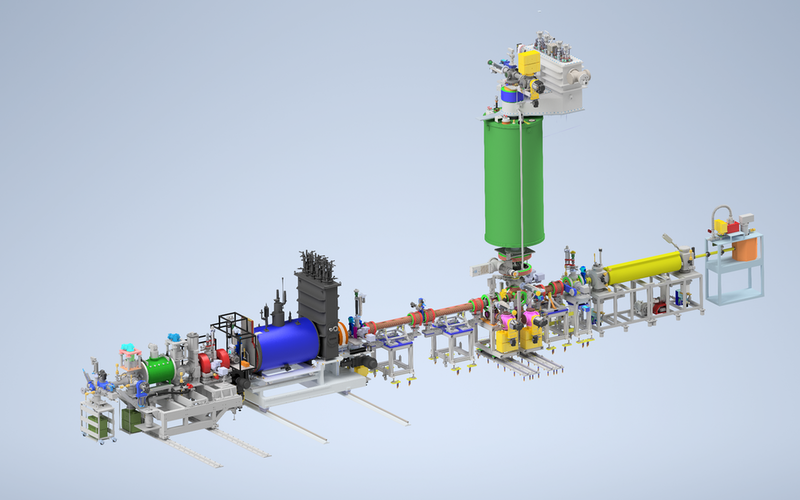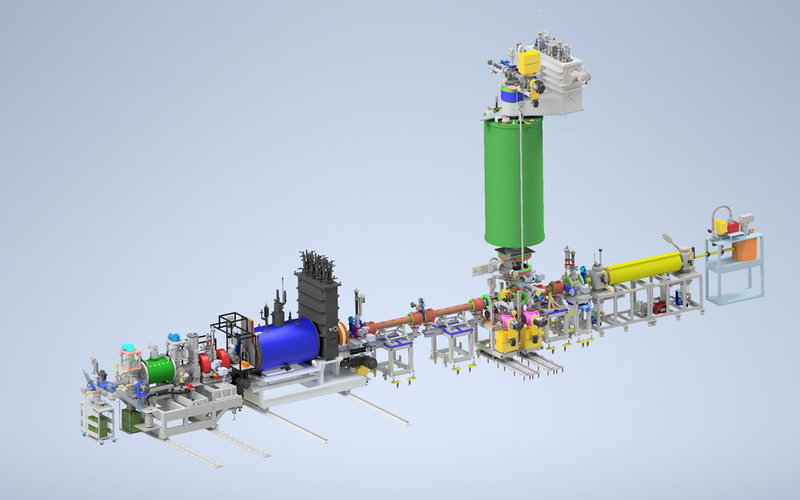Antimatter Feels Gravity Just like Matter
Throw a ball into the air and the pull of Earth’s gravity will bring it crashing back down. But what about a ball of antimatter? Will it fall in the same way, or does it somehow experience gravity differently? Physicists have been exploring such questions for nearly a century but, until now, there had been no direct experimental test of antimatter in free fall. Releasing the results of observations of free-falling antihydrogen atoms, the Antihydrogen Laser Physics Apparatus (ALPHA) Collaboration at CERN in Switzerland shows that the particles experience the same gravitational pull as ordinary matter as they accelerate to Earth [1]. The collaboration says that the experiments are a landmark test of the weak equivalence principle, which states that all types of mass should react equivalently to the force of gravity.
“There’s no theoretical reason to expect [antimatter] to do anything else but fall with a regular acceleration,” says Holger Müller, a physicist at the University of California, Berkeley, who was not involved in the study. Still, he is pleased to see the expectation confirmed. “There is just no substitute for direct observation,” he says.
Antihydrogen is composed of one antiproton and one positron—the antiparticle of an electron—making it the simplest neutrally charged antimatter atom. As such, it is an ideal system for probing gravity, as other forces can be ignored: if the researchers had instead used a charged particle, for example, electric forces would have come into play and—because they are stronger—would have overpowered gravity’s pull. “Making a gravity measurement, you’re just overwhelmed by a bunch of forces you can’t control,” says Will Bertsche, a physicist at the University of Manchester, UK, and a member of the ALPHA Collaboration. “You need some antimatter that is neutral.”
At the center of the ALPHA-g setup used for the free-fall experiments sits a magnetic trap composed of a superconducting magnet, which generates a magnetic field in the radial direction, and two electromagnetic magnets, called mirror coils, which generate fields in the vertical direction. These three magnets are aligned such that they trap antihydrogen atoms at 0.5 K between the two mirror coils. Detectors designed to reconstruct particle trajectories surround the trap.
In order to subject the trapped antihydrogen atoms to gravity, the researchers weakened the magnetic fields holding them in place over a period of 20 seconds. As that happened, the antihydrogen atoms, which were jumping around inside the trap, streamed out of the device, moving both up and down. The team then detected the antiparticles through the energy released when they annihilated with matter particles.
Because gravity is such a weak force, some of the antihydrogen atoms that initially move up when released should continue to rise, just like baseballs thrown into the air, which the collaboration sees in its results. But the researchers also find that more antihydrogen atoms exit from the bottom of the trap, the expected result if gravity’s effect on antimatter and ordinary matter is the same. Statistical analysis of the observations put the gravitational acceleration of the antimatter particle to be within one standard deviation of that of ordinary matter.
While previous experiments performed by others have explored antimatter’s interaction with gravity, those tests were all indirect. “It was just thrilling to see that the predictions that we had made, in some cases a decade earlier, actually turned out to be true,” says Joel Fajans, a physicist at the University of California, Berkeley, and a member of the ALPHA Collaboration. Müller agrees. “Finally, this [experiment] has happened,” he says. “I’m just happy that this [result] exists.”
Now that the collaboration has confirmed that the experiments work, the researchers plan to upgrade their setup before running further measurements. They also plan to develop computer simulations that better predict the behavior of antimatter atoms exposed to gravity. With both advances in place, the hope is that the ALPHA team will reach its ultimate goal—obtaining the first precise measurement of the weight of an antimatter atom. Time will tell.
–Allison Gasparini
Allison Gasparini is a freelance science writer based in Santa Cruz, CA.
References
- E. K. Anderson et al., “Observation of the effect of gravity on the motion of antimatter,” Nature 621, 716 (2023).





